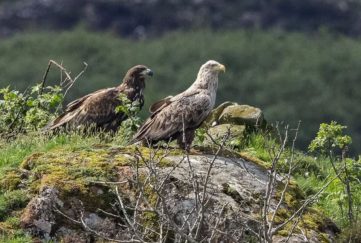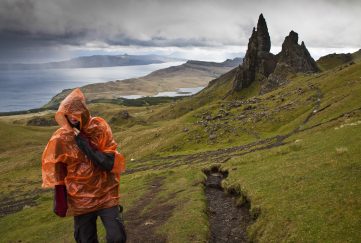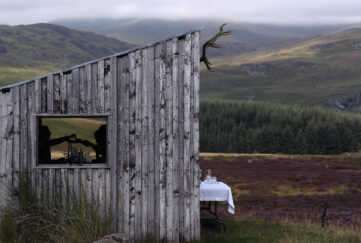Following In the Footsteps of Nan Shepherd
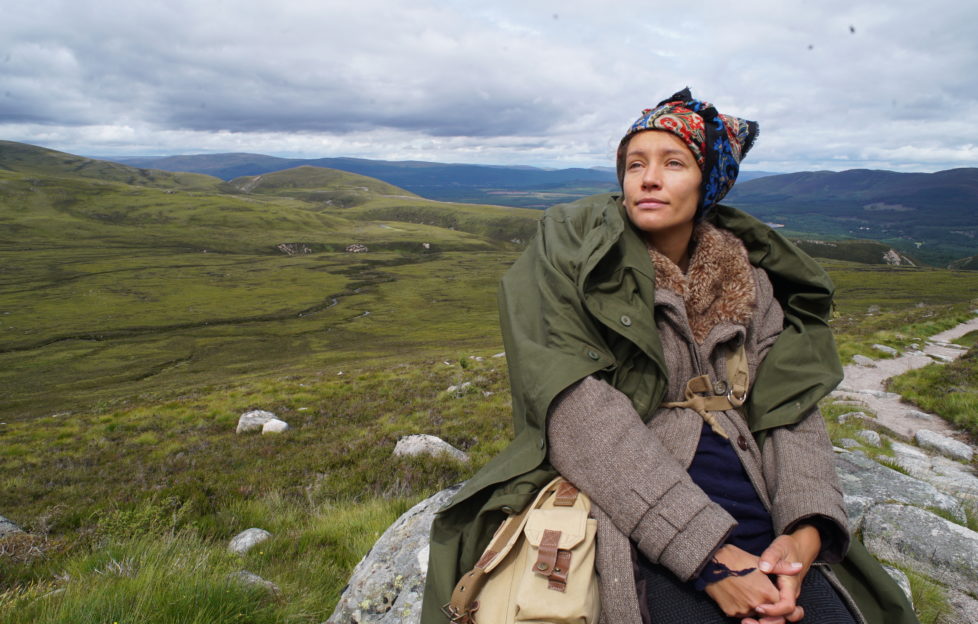
Woman With Altitude embarks on adventures that retrace the muddy footprints of trailblazing mountaineer Nan Shepherd…
Elise Wortley was delighted to discover the benefits of a 1940s tweed jacket when she spent 17 days walking and camping in the Cairngorms.
The itchy underwear, hobnail boots and canvas tent were more of an acquired taste.
Yet Elise, 30, was determined to make her adventure as authentic as possible. Her aim was to follow in the footsteps of the late Nan Shepherd, the trailblazing Scottish hillwalker and writer in the early to mid 20th century.
In 1945, Nan wrote a part-memoir, part-field study of the Cairngorms, The Living Mountain, although it was not published until 1977. Today, the book is described as “one of the finest books ever written on nature and landscape in Britain”.
Nan’s important place in history is also marked by her depiction in 2016 on the Royal Bank of Scotland £5 banknote.
However, there are still many people who are not aware of her legacy.
“In that era, around the 1940s, Nan was unusual,” Elise says. “She was a woman who enjoyed spending time in her local mountains, walking and writing about nature. When we look back, she seems incredibly inspiring.
“But I was surprised by how little known she is, to this day, and especially compared to male explorers.”
Elise, a part-time marketing professional from London, became fascinated by Nan after reading her book.
Who Was Nan Shepherd?
Anna “Nan” Shepherd was born on February 11, 1893, in East Peterculter and died in Aberdeen aged 88 on February 23, 1981. She attended Aberdeen High School for Girls, graduated from the University of Aberdeen and lectured at the Aberdeen College of Education. Nan was a major contributor to early Scottish modernist literature and published her first novel, The Quarry Wood, in 1928. Nan was a keen hill-walker and her poetry reveals her love for the Scottish mountains. The Living Mountain was her first non-fiction book, and she has appeared on the Royal Bank of Scotland £5 note since 2016.
“I liked the book immediately. It’s like one long poem and the way she describes elements, such as water and the mountains, is beautiful. I wanted to explore as Nan would have done – and to try to understand her motivations and her love of the Cairngorms.”
It was to be Elise’s first time in the Scottish Highlands and while she chose the summer of 2019 for her trip, she was treated to a full range of weather.
“The first five days were very wet and windy,” says Elise. “I had not expected it to be so cold in July and it gave me great admiration for Nan in practical terms. She could not rely on the warm, waterproof and lightweight clothing and equipment that we have today.
“I confess I was actually grateful for the long, heavyweight tweed jacket and the woollen tights, socks and a jumper for keeping me warm. But they are not so good in a heavy downpour as they got soaked through.
“The boots were also great, once I had located the source of some pain and sanded down the end of a nail with a rock. The soles were slippery, though.”
Elise discovered that the tent was “surprisingly sturdy and waterproof”. She says, “It is a 1940s tent, made of old canvas, and has a clever two-part design that allowed me to wear half of it as a poncho.
“It wasn’t the sort of tent that you would choose for a lightweight backpacking trip, though. It was bulky and heavy and took up a lot of space in my rucksack.”
Elise learned to adapt to the conditions and the kit. When the weather was at its worst, she set up camp and stayed put. When the sun finally emerged, she walked every day or two to a new camping spot and then set off to explore glens and summits with a lighter pack.
She hiked the great mountain pass of the Lairig Ghru and visited the Pools of Dee, the “freezing water bubbling up from the ground,” as Nan described it.
Quotes From The Living Mountain by Nan Shepherd
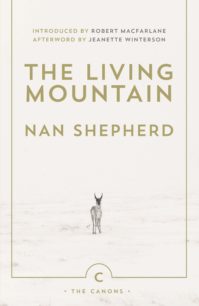
- “Yet often the mountain gives itself most completely when I have no destination, when I reach nowhere in particular, but have gone out merely to be with the mountain as one visits a friend with no intention but to be with him.”
- “Eye and foot acquire in rough walking a co-ordination that makes one distinctly aware of where the next step is to fall, even while watching sky and land.”
- Of water, she wrote, “I love its flash and gleam, its music, its pliancy and grace, its slap against my body; but I fear its strength.”
Elise says, “I also walked to many of the high summits, including Ben Macdui, and discovered glorious paths and views. I watched tiny frogs hop between streams and deer chewing on grass.
“There were magical moments, too, when I was surrounded by the silent, high landscape. I tiptoed into the crystal water of Loch Avon, thinking of Nan’s words, ‘Gazing into its depths, one loses all sense of time.’ I began to understand Nan’s world on a deeper level.”
“I also found a new rhythm to my days and it was much slower than the modern world. I did not have a mobile phone or any modern technology and nor did I have a torch. Just candles and no convenience foods.
“I found that I awoke when the sun came up and went to sleep as it set. I learned to sit and think, to be still – to let myself simply sit and be content – to write my journal and to eat simple meals cooked on a basic stove.”
The Cairngorms trip was Elise’s second expedition to follow in the footsteps of “inspiring female explorers”. In 2018, she spent a month in the Himalayas retracing part of the route of French-Belgium explorer Alexandra David-Néel’s trek into India in the 1920s.
Elise had first read Alexandra’s My Journey to Lhasa when she was 16. “The book opened my eyes to the incredible story of a woman exploring on her own and at a time when few people, let alone women, did so.
“I was in my late 20s, I had recently suffered a period of crippling anxiety and I decided I wanted to be fearless, to do something I wouldn’t normally dare. I decided to set out to follow in Alexandra’s footsteps.”
Elise says that the Himalayas and Cairngorms posed different challenges but both show-cased the ground-breaking nature of these women’s paths. This year, she plans to follow in the footsteps of Freya Stark, who wrote The Valleys of the Assassins and other Persian Travels.
“My aim is to highlight incredible women, whose achievements were often overlooked compared to those of their male counterparts. I hope to raise awareness of women’s rights in travel, and encourage others not to be afraid to take on a challenge.”
For more see www.womanwithaltitude.com
Don’t miss the interview with Cairngorms Writer in Residence Merryn Glover on her literary response to Nan Shepherd’s The Living Mountain – only in The Scots Magazine’s May issue, on-sale April 15.


